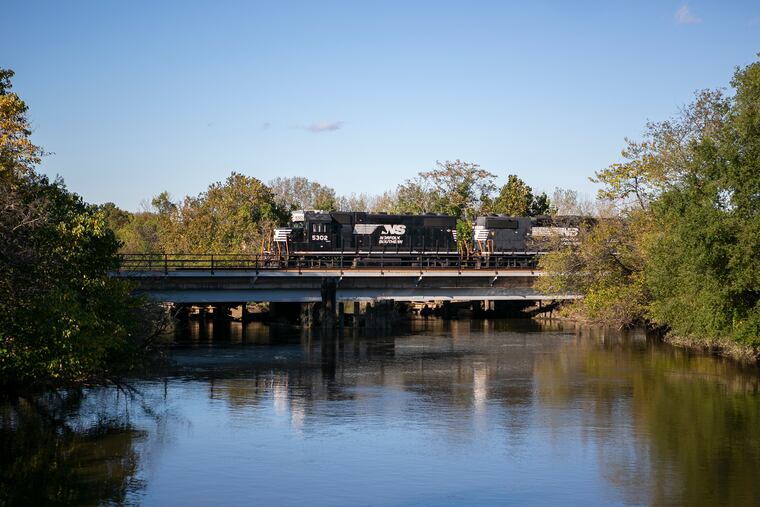Cooper River is first urban waterway in N.J. to get upgraded protection
New Jersey has upgraded the protection status of 600 miles of rivers and streams, including a two-mile stretch of the Cooper River as it runs through Camden.

New Jersey has upgraded the protection status of 600 miles of rivers and streams, including a two-mile stretch of the Cooper River as it runs through Camden, making it the first urban waterway with such stringent safeguards in place.
The state’s Department of Environmental Protection adopted the rule as of Monday, amending what’s known as Surface Water Quality Standards. It upgraded the designation of 600 miles of waterways to Category One, a level that seeks to limit pollution and development.
The changes are the result of a process that began more than a year ago when 749 miles of waterways were being considered.
New Jersey has 23,500 river miles. The new designations would mean nearly 7,000 miles will now carry Category One protection.
The state has three levels of classification for freshwater streams, creeks, rivers, and lakes: outstanding National Resource Waters, the most protective tier, followed by Category One and Category Two.
A single waterway can have more than one designation, depending on where it runs. For example, the Cooper River flows about 16 miles from underground near Gibbsboro, is then fed by stormwater as it runs through heavily populated Camden County towns such as Haddonfield, Cherry Hill, Collingswood, and Pennsauken before reaching Camden.
A Category One designation would mean that segment of the Cooper River closest to the Delaware would get additional protection, such as requiring a 300-foot buffer against development, tougher standards for discharges from businesses and sewage treatment plants, and also more monitoring.
Category One provides additional protections designed to stop water quality degradation and to discourage development harmful to natural resources. The DEP says the designation is important because so many people depend on waterways for drinking water, recreation, fishing, and shellfish harvesting.
It is the first time in more than a decade that the state has upgraded designations for its waterways.
“This is a big deal,” said Doug O’Malley, director of Environment New Jersey. “This is also protecting hundreds of thousands of acres because of the buffer zones for these waterways.”
For example, O’Malley said it will prevent the expansion of at least one sewage treatment plant in Hunterdon County, and also will affect any other municipalities’ or businesses’ proposals that would discharge pollutants into the waterways.
Don Baugh, president of the nonprofit Upstream Alliance, said he was particularly pleased about the Cooper River, which will be more protected from just past the Cooper Lake dam at the Pennsauken border, and through the city to the Delaware River.
“This is a magnificent moment for those of us that promote recreation on the Cooper River," Baugh said. “As an urban waterway once devoid of life, this is a testament that the river has returned to life, teeming with birds, fish, and even the threatened Eastern pondmussel.”
Baugh said he hopes that such protections are eventually expanded to other urban waterways.
Other South Jersey waterways getting upgrades include segments of the Cohansey River, Crystal Creek, North Run Tributary, Raccoon Creek, Salem River, Woodbury Creek, Breen Brook, Manatico Creek, and the Old Robins Branch of Dennis Creek, according to a list compiled by O’Malley.
Though New Jersey Sierra Club director Jeff Tittel said the upgrades were a plus, he took issue with the state leaving miles of waterways off the Category One list.
“DEP took two steps forward and one step backward in adopting the C1 rules," Tittel said. “We are disappointed that DEP took out 150 miles of streams. Many of the streams that were pulled were tied to more pollution, more development, and special interest.”